Get PeakVisor App
Sign In
Search by GPS coordinates
- Latitude
- ° ' ''
- Longitude
- ° ' ''
- Units of Length

Yes
Cancel
Share ×

Scan the QR code and open PeakVisor on your phone
❤ Wishlist ×
Choose
Delete
Greenland is an island country in North America and is one of the autonomous territories of the Kingdom of Denmark. It is the world’s largest non-continental island, covering 2,166,086 square kilometers (836,330 sq mi); however, the Greenland Ice sheet dominates the central part of the island and covers 1,755,637 km2 (677,855 sq mi), over 80% of the country. There are over 2307 mountains that are located along the coast of Greenland, and of the 2307 exposed peaks, Gunnbjørn Fjeld is the tallest, rising 3,694 m (12,119 ft) above sea level. The highest point of the ice sheet, which dominates the interior of the island, is at a location known as Summit Camp and it is 3,210 m (10,500 ft) above sea level.
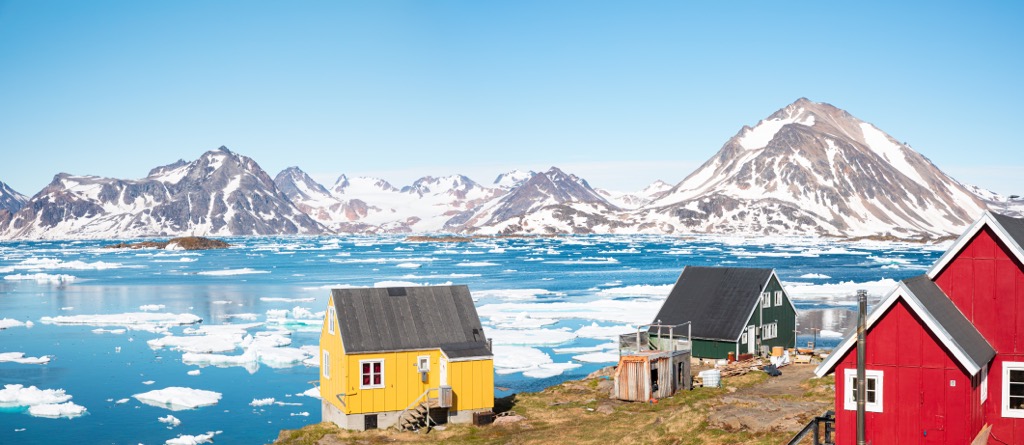
Greenland is the largest island in the world, and it is located between the North Atlantic Ocean and the Arctic Ocean, northeast of Canada. While Greenland is an autonomous territory of the Kingdom of Denmark and politically connected to Europe, it is geographically part of North America.
Canada is the closest neighbor, located to the west of Greenland across Baffin Bay. Iceland is located east of Greenland, across the Denmark Strait.

The interior of Greenland is covered by the massive Greenland Ice Sheet, which covers over 80% of Greenland’s area. The tallest point of the ice sheet at Summit Camp is 3,210 m (10,500 ft) above sea level and is taller than many of the 2307 mountains.
The main feature of Greenland’s mountains is that they are all located along the coast. Gunnbjørn Fjeld is the tallest of Greenland’s mountains, rising 3,694 m (12,119 ft) above the sea, and it overlooks Iceland from the southeast edge of Greenland.
Northeast Greenland National Park is the only national park in Greenland. Known as Kalaallit Nunaanni nuna eqqissisimatitaq in Greenlandic and Grønlands Nationalpark in Danish, Northeast Greenland National Park is the largest national park in the world and the first national park created by the Kingdom of Denmark.
All of the settlements and towns of Greenland are located along the coast, with the population concentrated along the west coast. Nuuk is the capital city of Greenland, and it has a population of about 20,000 people which is about a third of the population of Greenland.

Greenland is part of the ancient continents that formed during the Archean, about 4 billion years ago. During the Archean, the world was covered with water and continents were starting to form under deep oceans. Greenland is part of the ancient continent of Laurentia, which is the core of North America.
The Isua Greenstone Belt in southwest Greenland contains some of the oldest known bedrock on the planet, having been created about 3.8 billion years ago. The Acasta Gneiss in Northwest Territories, Canada is the only place to potentially have older rocks. The rocks of the Acasta Gneiss outcrop were metamorphosed between 3.6 and 4 billion years ago.

Ancient rocks, like those found in the Isua Greenstone Belt are typically highly metamorphosed; however, this bedrock in the Isukasia area of southwest Greenland has avoided the typical metamorphosis and therefore answers questions about how the surface of the planet appeared billions of years ago.
The bedrock around the capital city of Nuuk is an estimated 3.6 billion years old. The rocks around Nuuk are composed of the dark melanocratic Amitsoq gneiss which was intruded by and folded into the younger leucocratic Nuuk gneiss.
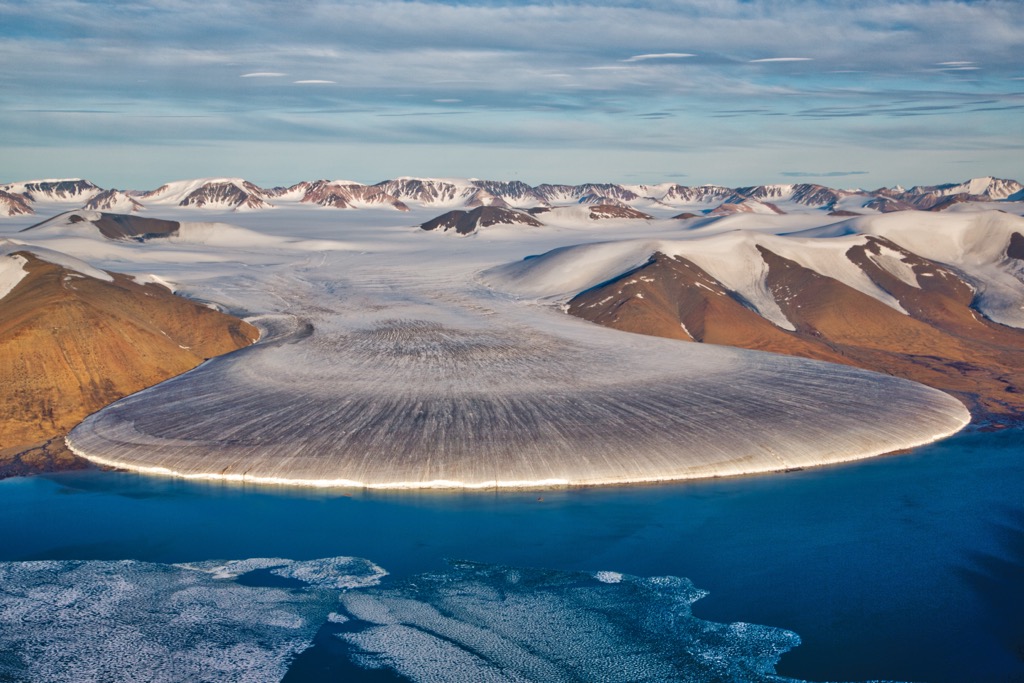
The rocks of Greenland are incredibly old, and the mountains are also exceptionally old, when compared to ranges such as the Canadian Rockies. Two of the main events, or orogeneses, that created Greenland’s mountains are the Ketilidian orogeny and the Caledonian orogeny.
The Ketilidian orogeny affected southern Greenland about 1.8 billion years ago. Known as the Ketilidian mobile belt, the southern Greenland mountains are related to formations in Newfoundland, Canada and in Scotland.
The Caledonian orogeny occurred between 490 and 390 million years ago when the ancient Greenland collided with northwestern Europe during the formation of Pangea. This mountain building event created the mountains of eastern Greenland, Svalbard, the Scandinavian Mountains, and Scotland. The Latin name for Scotland was Caledonia, for which the event was named.

The lack of vegetation across Greenland has allowed scientists to study geological formations on a grand scale. In addition to clues about the geology of the earth’s ancient continents, Greenland has an abundance of fossils that date from the Paleozoic to the Holocene.
There are examples of Devonian Acanthostega and Ichthyostega which are internationally relevant, as well as fossil evidence of early mammals from the Late Triassic. Further examples of fossils found in Greenland are theropod and sauropod tracks and the fossilized remains of temnospondyls, phytosaurs and stem turtles.

The topography of Greenland’s mountains, which are all located along the coast of the island have been heavily influenced by glaciers. While ice sheets and glaciers have been regular features upon Greenland since the Eocene, it is believed that the current Greenland Ice Sheet formed between 188,000 and 130,000 years ago, during the Pleistocene.
The Greenland Ice Sheet was expanding, covering about 40% more area than presently, during the Pleistocene glacial advance, about 24,000 years ago. As precipitation fell onto the ice sheet, glaciers flowed towards the ocean. As the glaciers advanced, they carved deep valleys. The glacial valleys filled with water and became the rugged fjords for which Greenland is famous.

Greenland’s cold and harsh climate severely limits the growth and diversity of flora and fauna. The plants and animals that thrive in Greenland’s arctic climate are rugged and hardy, having made adaptations to live in such a harsh climate.
Plants on Greenland mainly consist of grasses and shrubs, with only about 500 species of complex plants. European white birch is the most common native Greenland tree, and common juniper, rowan, gray-leaf willow is also found within the island nation.
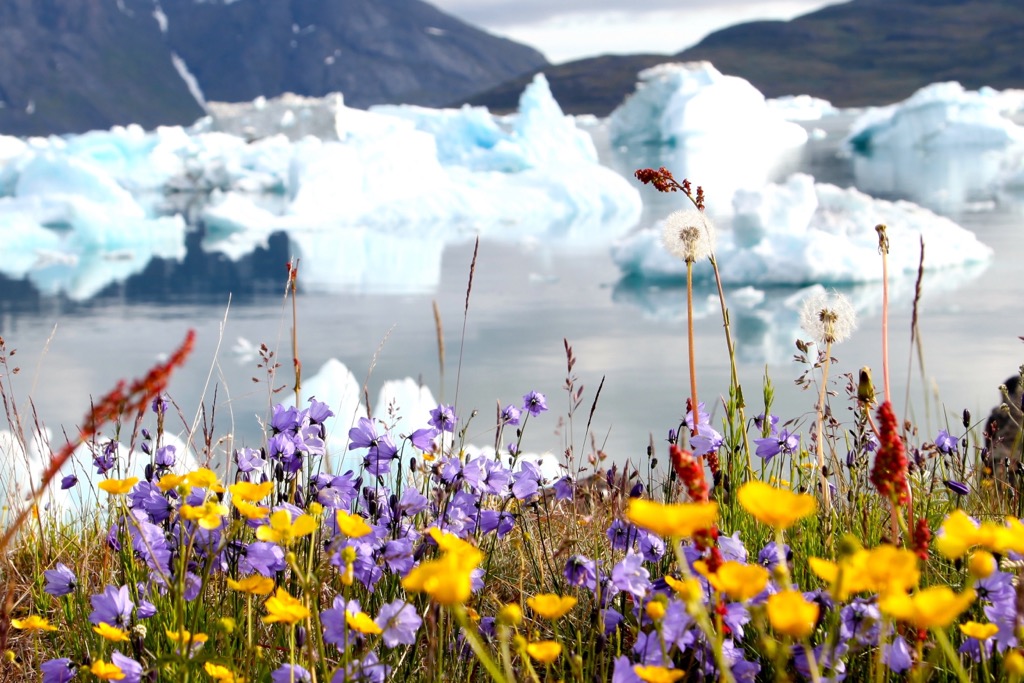
Simple plants are more abundant; however, there are still relatively few when compared to more temperate parts of the world. Greenland has about 950 species of lichen and between 600 and 700 species of mosses, fungi, and bryophytes.
There are fewer than ten species of mammals that natively inhabit Greenland. The few mammals that inhabit Greenland are the polar bear, musk ox, arctic wolf, arctic fox, arctic hare, collared lemming, and ermine. The Greenland dog was introduced by the Inuit and Greenlandic sheep, goats, cattle, reindeer, horse, chicken, and sheepdog were introduced by Europeans.
There are many species of birds, especially seabirds that can be found in Greenland. Some of the bird species that inhabit Greenland year-round are the ptarmigan, short-eared owl, snowy owl, gyrfalcon, white-tailed eagle, and the arctic redpoll.
Populations of auks, puffins, skuas, and kittiwakes breed upon the steep coastal cliffs. While some of the migratory birds include the snow and Lapland bunting, ringed plover, red-throated loon, and the red-necked phalarope.
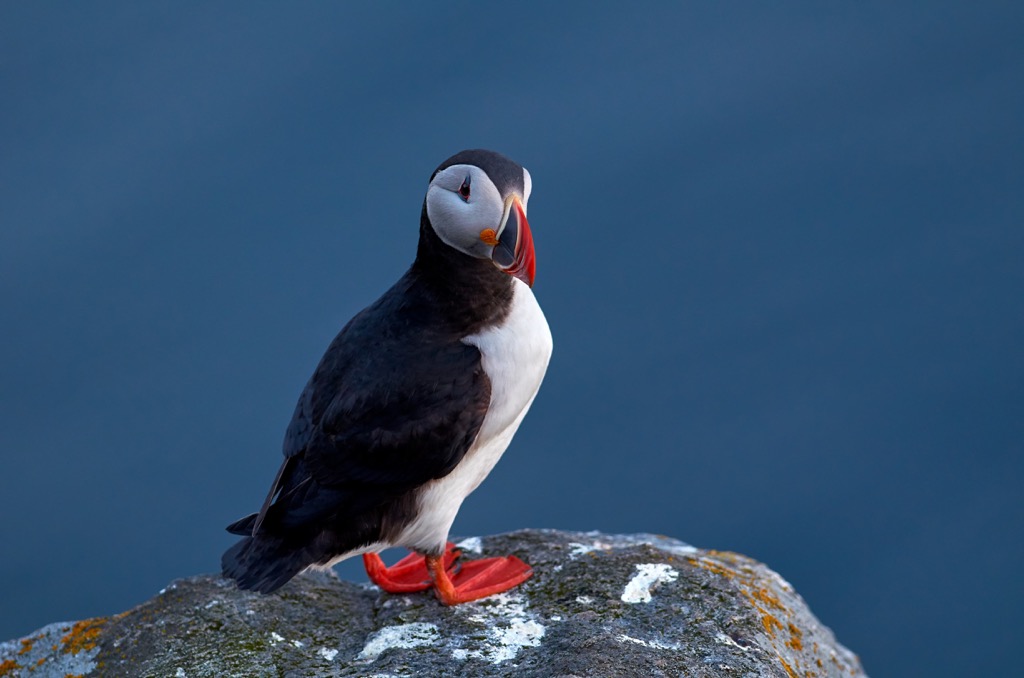
The waters surrounding Greenland are filled with over 250 species of fish and marine mammals. The hooded seal and the gray seal are known to be seen along the Greenland coast and there are many species of whale that frequent the waters around Greenland.
While on a tour around Greenland, some of the whale species you may spot are beluga, blue, fin, Greenland, humpback, minke, pilot, and sperm whales. You may also be treated to a sighting of a narwhal.
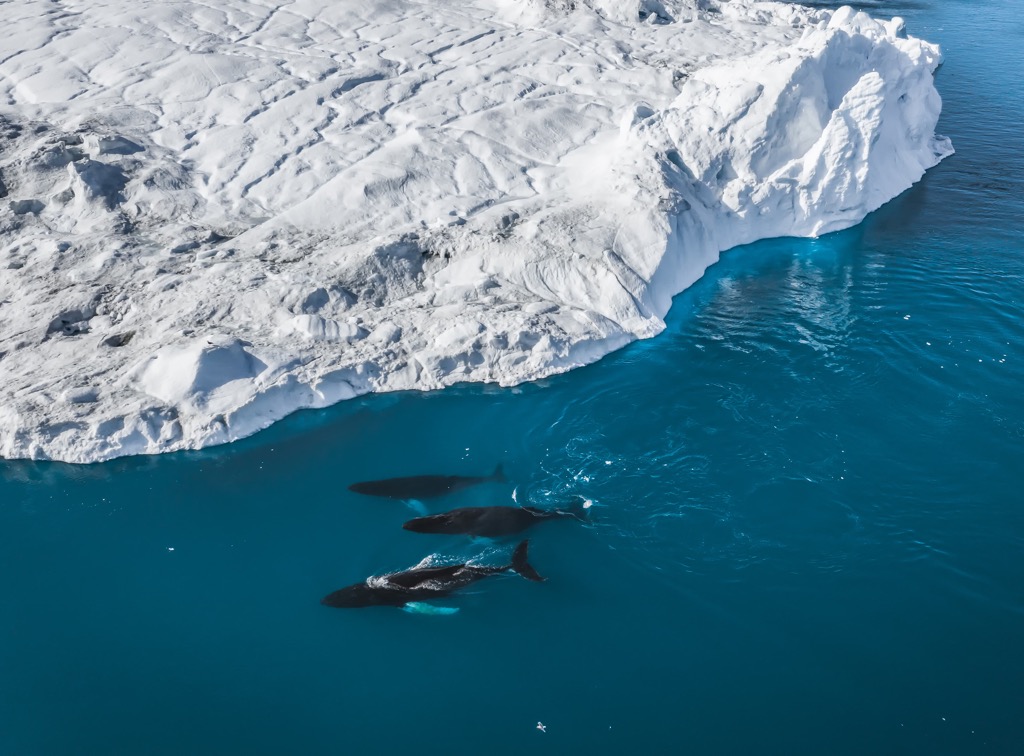
The first known inhabitants of Greenland came from North America and settled on the island about 4,500 years ago. At about the same time, the Independence I culture settled northeast Greenland while the Saqqaq culture settled the south end of Greenland.
The Independence I culture lasted about 600 years as a society of hunter-gatherers in the harsh Greenland climate. It is suggested that changing environmental conditions and overhunting in the sensitive arctic ecosystem led to the extinction of this culture. After the collapse of the Independence I culture, northern Greenland would remain uninhabited until about 700 BCE.
The Saqqaq culture persisted inhabiting the south of Greenland until about 800 BCE. Following the Saqqaq and Independence cultures came a group that is known as the Pre-Dorset culture. The Pre-Dorset culture is a catch-all phrase for paleo-Eskimo cultures that lived in the arctic before the Dorset culture.
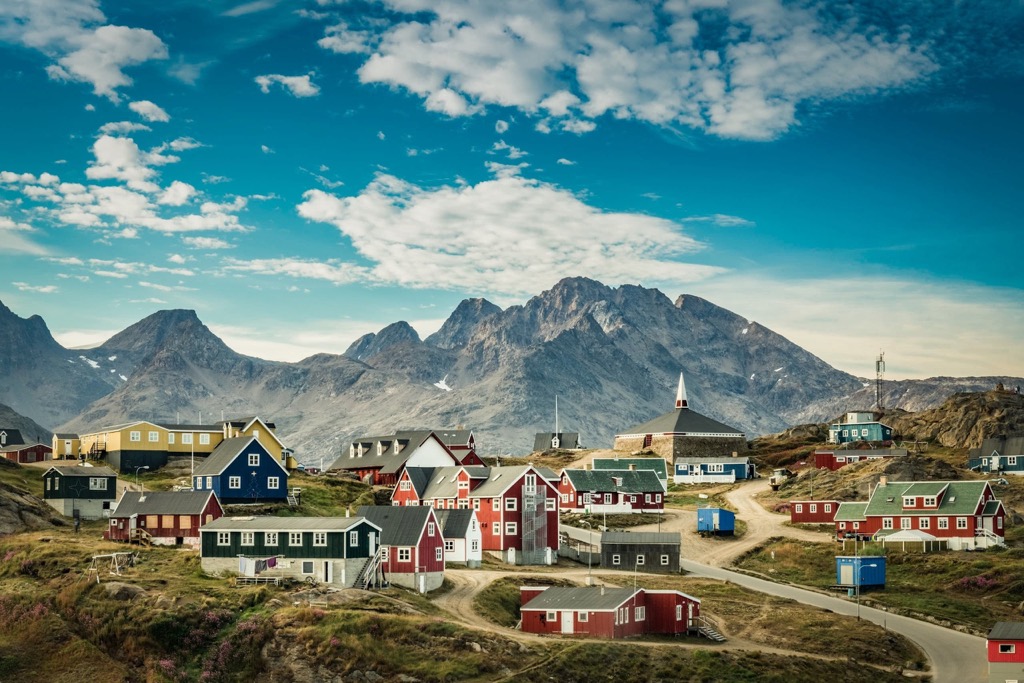
The Pre-Dorset culture is believed to have arrived on Greenland; however, the culture is generally considered extinct by 1500 CE, with the last remaining members perishing in eastern Canada.
It is believed that all the inhabitants of Greenland had perished or migrated from the island before 1 CE. Greenland likely remained uninhabited until about 700 CE when members of the Dorset culture arrived on the western coast, having migrated from northern Canada. The Dorset culture inhabited the west coast until about 1300 CE.
While the Dorset culture was inhabiting the west coast of Greenland, Erik the Red set out from Iceland and arrived on the southwest coast during the 980s. The Viking sagas tell of how Erik the Red explored the Greenlandic coast, claiming regions as his own. Erik returned to Iceland where he convinced many to follow him back to Greenland to farm and create settlements.
At the height of the Viking settlements in Greenland, there were likely about 5,000 settlers spread across three settlements in southwest Greenland. The Norse settlers imported cattle, goat, and sheep for their milk, cheese, and butter. Most of the meat the settlers consumed came from fishing and hunting caribou and seals.
In the year 1000, Leif Erikson, the son of Erik the Red left Greenland to explore the regions around Vinland. Vinland was an area of North America that the Vikings sailed to and explored nearly 500 years before Columbus arrived in the Americas. It is generally accepted that the Vinland Sagas describe present-day Newfoundland, New Brunswick, and the Gulf of Saint Lawrence in Canada.
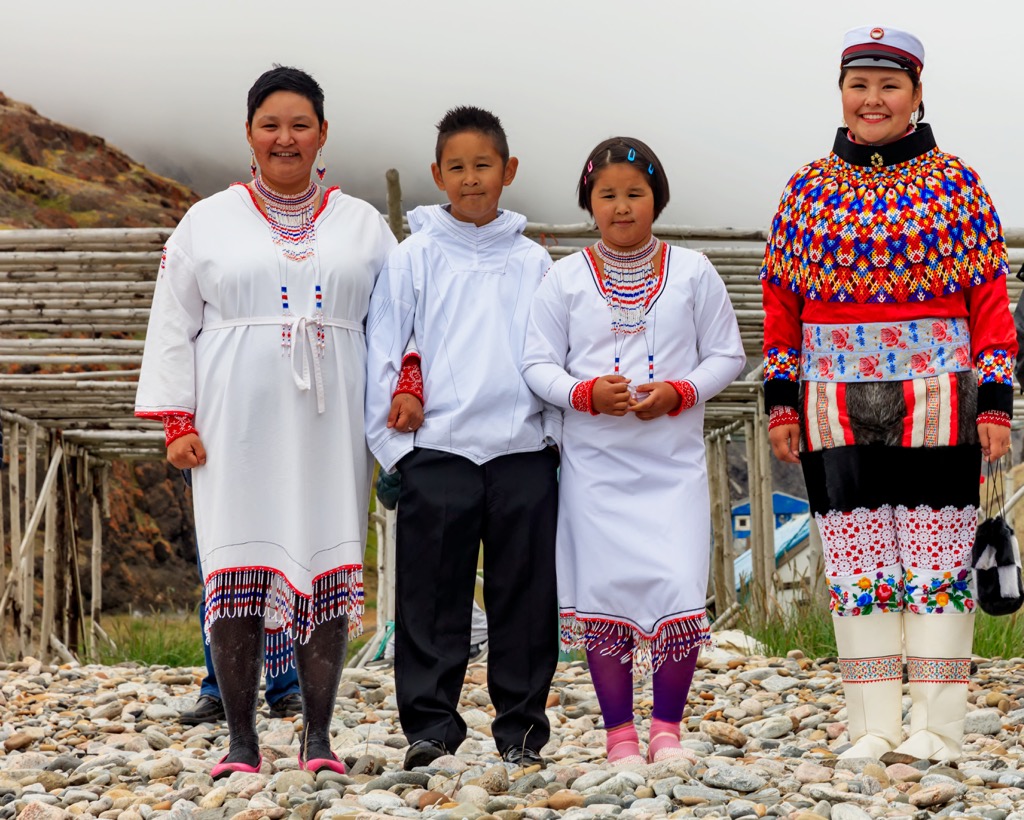
During their time, the Norse settlements traded ivory from walruses and narwhal tusks, as well as rope, sheep, seals, wool, and cattle hides with partners in Iceland and Norway. The settlements began to decline in the early thirteenth century and the last written record from the Norse settlements documents a marriage at Hvalsey Church in 1408.
It is likely that the Norse settlements had completely failed by the middle of the fourteenth century. There are many speculated reasons for the failure of the Viking settlements, with theories such as cumulative environmental damage, climate change related to the “little ice age”, conflict with the Inuit, declining value of ivory, and others.
As the Viking settlements were failing, the settlements of the Dorset culture who inhabited sites in northwestern Greenland were also failing. It is believed that one of the main factors that contributed to the downfall of the Norse settlements was their inability or unwillingness to use Inuit technology.
The modern-day Inuit who inhabit Greenland are the descendants of the Thule, who arrived in Greenland around 1300 CE. Throughout their cultural migration across Beringia and the Canadian arctic, the Thule had become very adept at living in the harsh northern climate.
The Thule had mastered the use of kayaks for hunting along the arctic shores and they developed the use of dogs to pull their sleds, which expanded their hunting range. Furthermore, the Thule masterfully crafted their clothing from hides of arctic animals and created useful tools for hunting, such as the harpoon.
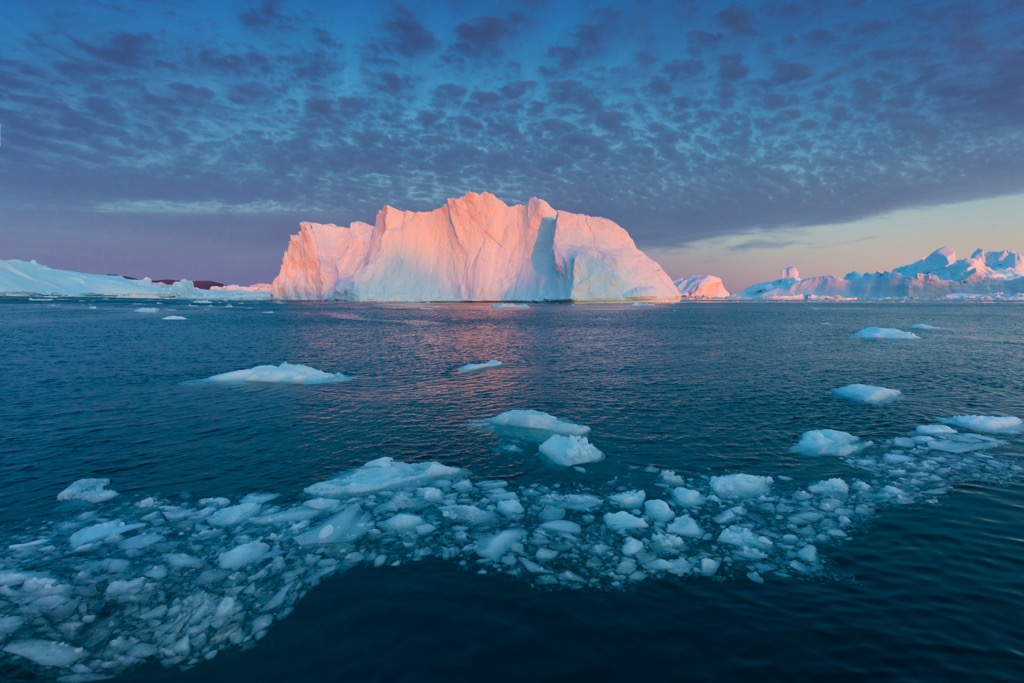
After migrating across northern Canada, the Thule arrived and first settled the northeastern coast of Greenland. By 1500 CE, the Thule had migrated and inhabited the coastal areas of southern Greenland.
Europeans returned to permanently settle Greenland in 1721 when a missionary, Hans Egede arrived with a Danish backed trade company in Greenland to reestablish contact with the Norse settlers who were believed to be there. While the Norse settlements had long been abandoned, Egede did attempt to convert the local Inuit and created the settlement of Godthåb in the process.
Various political forces played out in Greenland over the following centuries where various countries would attempt to claim sovereignty over Greenland. The Norwegians made a good claim to the country, and the United States even tried to present a claim; however, in the end, it was decided that Greenland was a Danish colony and part of the Kingdom of Denmark.
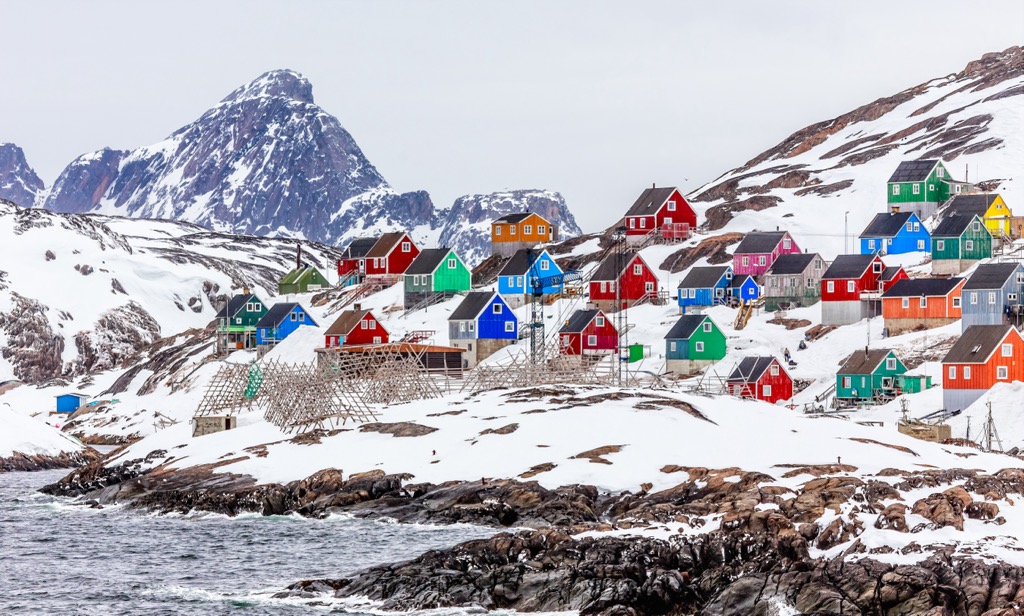
In 1953 Greenland was upgraded from a colony to a province of Denmark and received further autonomy in 1979 under the Home Rule Act. It was only in 2009 that Greenland established provisions for self-government, such that Denmark only maintains control of foreign affairs and defense. Furthermore, Greenlanders were finally recognized internationally as a separate people that are not Danish.
It was in 2009 that Kalaallisut was made the official language of Greenland and the official name of the county is Kalaallit Nunaat. These changes identify the significant Inuit heritage in the inhabitants of the country today.
Godthåb was renamed to Nuuk and it became the capital city of Greenland, with about a third of the country’s population living there. Fishing is the primary industry: however, there are an abundance of minerals as well as amazing potential for increased tourism to the country.
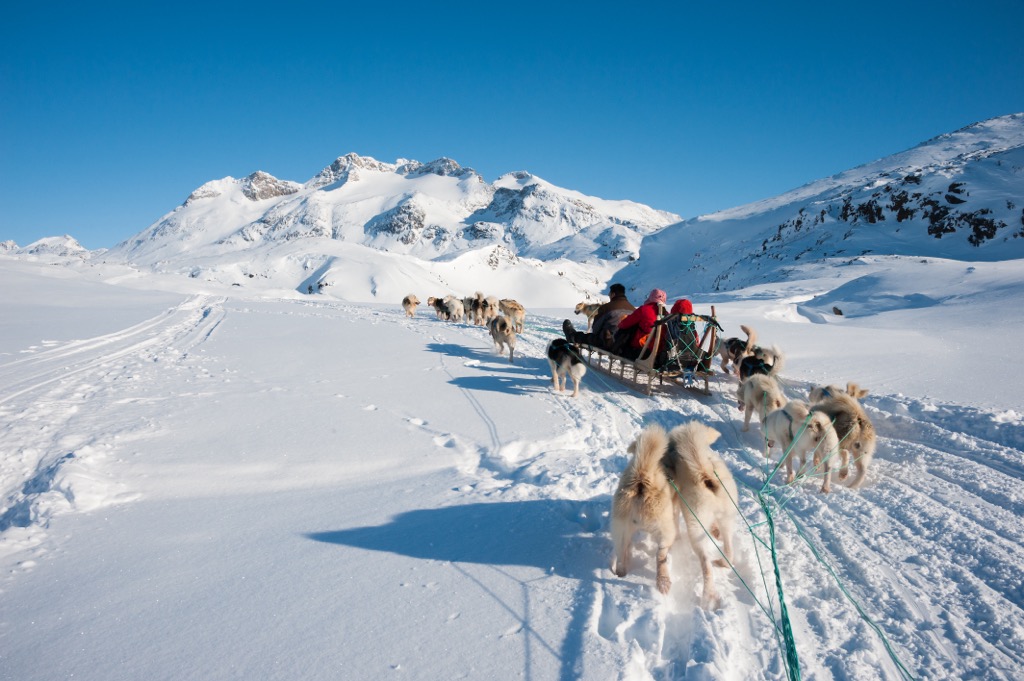
The mountains, the glaciers, the wildlife, the history, and the culture are all wonderful reasons to visit Greenland. The following are some of the major attractions of the country.
This UNESCO Heritage Site is one of Greenland’s most visited areas. This incredible section of Disko Bay is filled with icebergs that have calved off the local glacier.
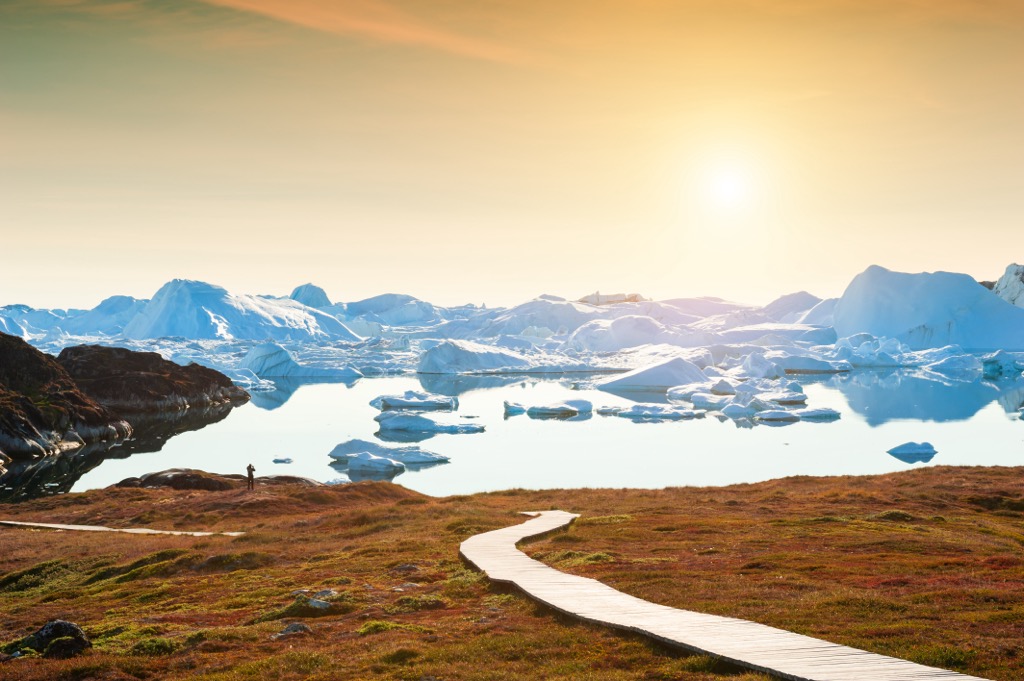
The massive Sermeq Kujalleq glacier flows towards the ocean at an astonishing 25 m (82 ft) per day. With the right timing visitors can witness the incredible view of glaciers breaking into the ocean. Ilulissat Ice-fjord is one of the few fjords that can be viewed from land.
Whether from a cruise ship or one of the many whale watching tour vessels, there are many opportunities to view majestic whales along the Greenland coast. Visitors typically encounter humpback whales, minke whales, and fin whales; however, some guests are treated to sights of spectacular blue whales, orcas, narwhals, beluga whales, sperm whales, and pilot whales.
June and July are the best months to sail the fjords looking for whales. Tours are offered from towns such as Qeqertarsuaq, Nuuk, and Aasiaat.
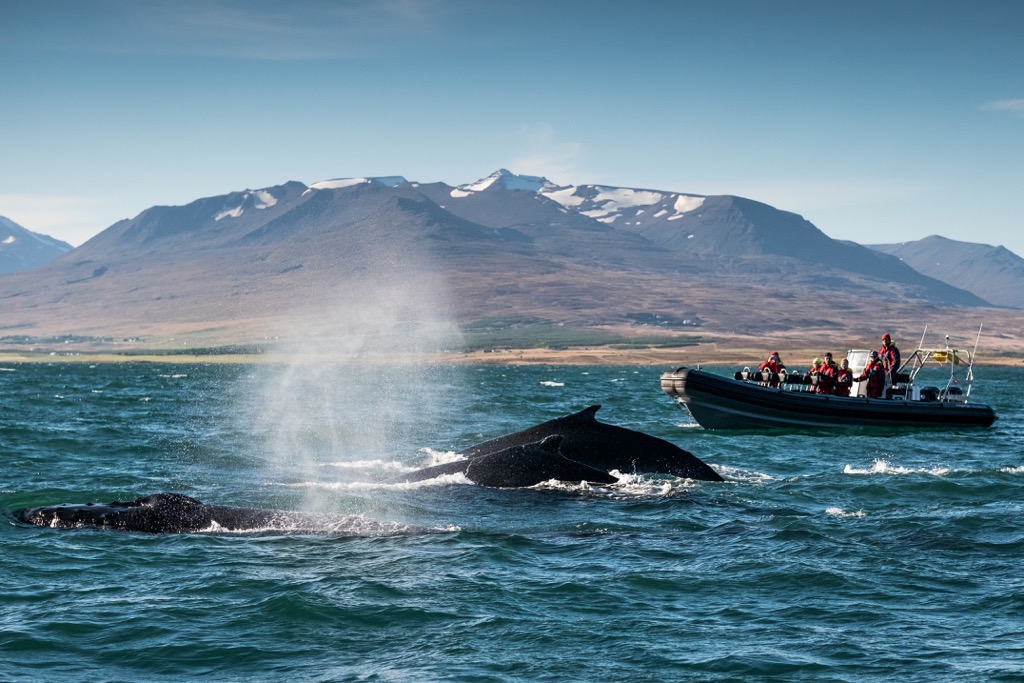
There are thousands of hot springs around Greenland; however, the springs on the uninhabited island of Uunartoq are the perfect temperature for bathing. The island is a short boat ride from the town of Ilulissat.
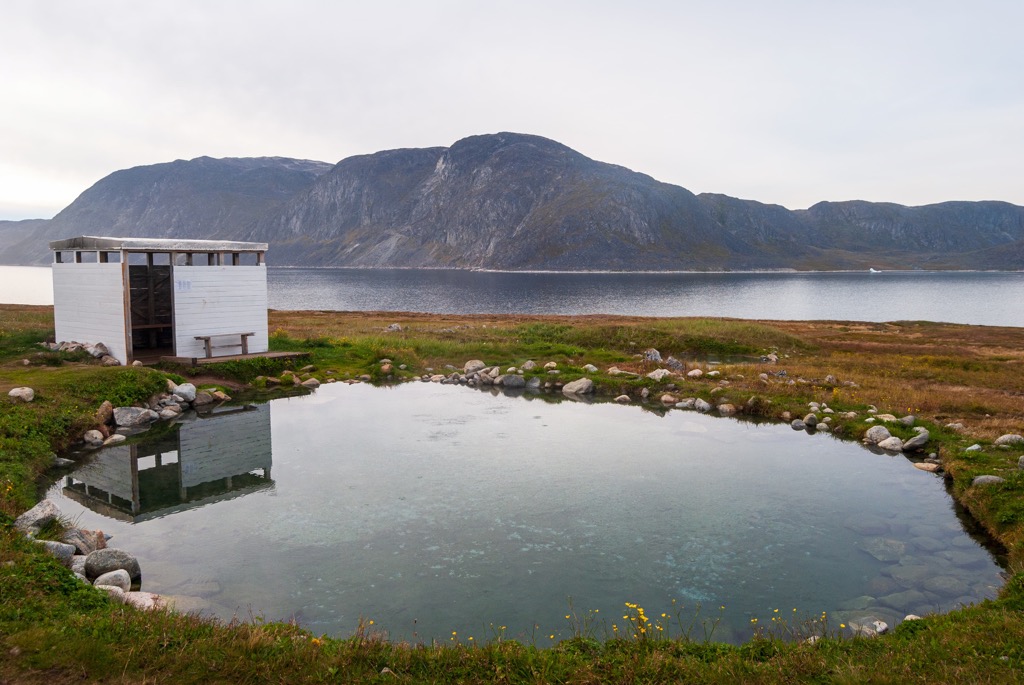
Greenland has an incredible history that only spans 4,500 years; however, the climatic conditions of the country have allowed for the preservations of many archeological sites and artifacts. Many of the artifacts discovered in Greenland are housed in museums, such as those in Qaaqortoq and Nuuk. The museums feature artifacts from the Dorset, Viking, and Thule cultures.
Other museums around the country showcase particular aspects of Greenland culture. For example, the Knud Rasmussen Museum commemorates the arctic expeditions of Knud Rasmussen as well as the history of Ilulissat and Sermermiut.
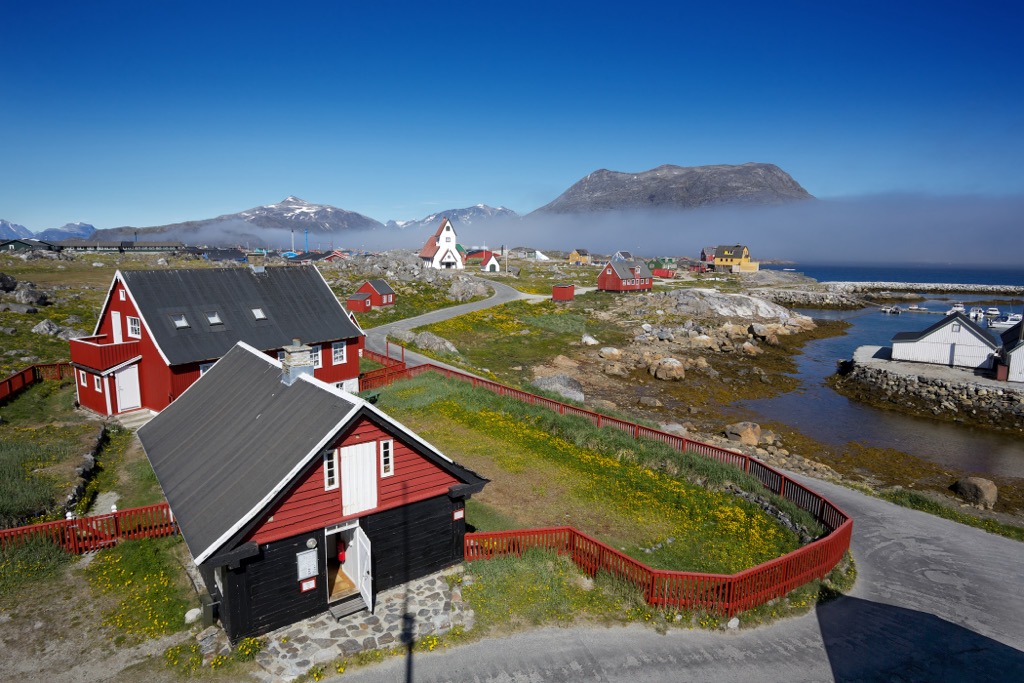
Among the most popular activities while in Greenland is to visit the ruins of the Norse settlers and the archeological sites of the Dorset and Thule cultures.
Some of the well preserved ruins include Hvalsey Fjord Church, which is the oldest church in Greenland, and Brattahlid, which was the estate of Erik the Red in Greenlands Eastern Settlement.
Sermermiut is home to an ancient Dorset settlement that was inhabited about 2,000 years ago. Visitors can walk about an hour from the town of Ilulissat, to the site where some of the best-preserved remnants of Dorset culture were found and the abandoned village site and artifacts can be viewed.
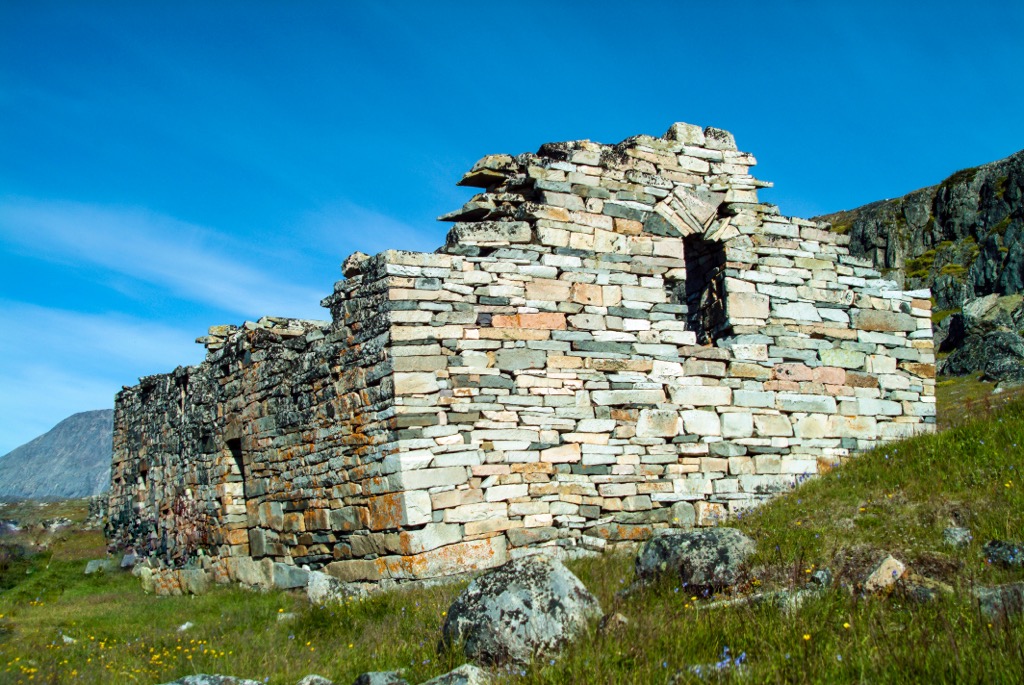
While there are still many peaks that remain unclimbed in Greenland, the climate and terrain are reserved for experienced and hardy northern mountaineers. Climbing Greenland’s mountains is not typically accessible to the uninitiated.
However, there are still many opportunities to explore the wilderness of Greenland. During the eight months of winter, and throughout the summer there are many dog sled and snowmobile tours. Some of these tours can take you to explore Disko Bay, Tasiusaq fjord, Qaanaaq, and Thule.
Visitors can visit the town of Kangerlussuaq which is the closest access to the Greenland Ice Sheet and the starting point for the 200 km (124 mi) Arctic Circle Trail. This is one of the few places that visitors can access the ice sheet without a helicopter. Furthermore, day trips to the ice sheet are available and nearby Sugarloaf Mountain is one of the accessible mountains in the area which visitors can hike.
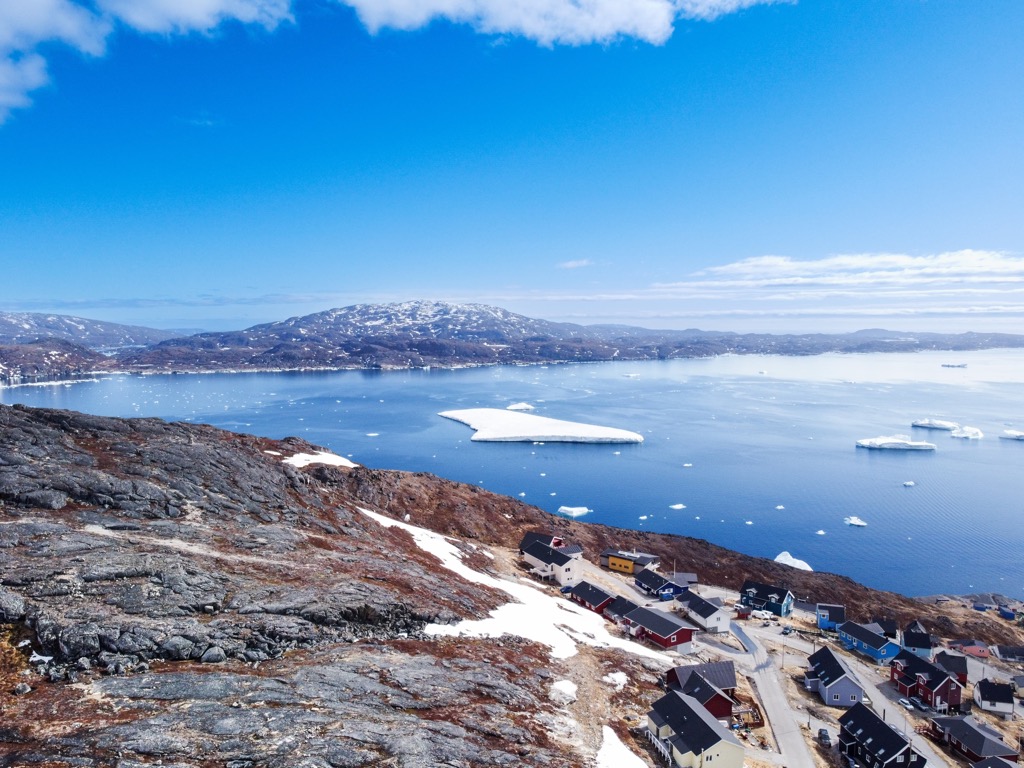
Greenland’s communities are located along the ice-free coast of the country, and the charming communities are typically filled with brightly painted wooden buildings that feel like they are from a story book. The following are some of the major and interesting communities in Greenland.
The location of Nuuk has a long history of habitation, with evidence that the ancient Saqqaq culture inhabited the area over 4,000 years ago. The area was then occupied by the Dorset culture and the Vikings inhabited the area as part of their Western Settlement.
Inuit and the Norse lived in the area together, with minimal interaction, until the Norse settlements were vacated during the fifteenth century. Since about 1000 CE, the Thule and Inuit have inhabited the region.
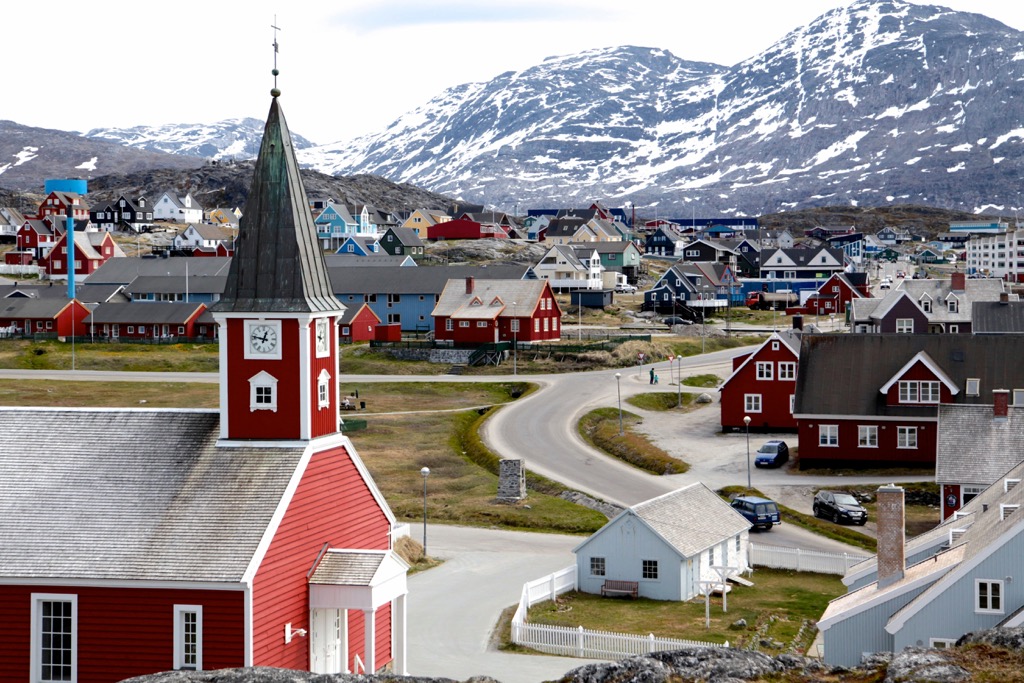
The city proper was established as Godthaab in 1728 by Hans Egede and now over a third of the country’s population resides in Nuuk. By proportion, cultural authority, and cultural impact, Nuuk may be the most indigenous city in the world.
While visiting Nuuk, Hans Egede’s House, the Nuuk Cathedral, and the National Museum can give visitors insight into the history of the country. Furthermore there are many great hikes and walks around Nuuk; however, it is recommended to get a local guide to help you on your way.
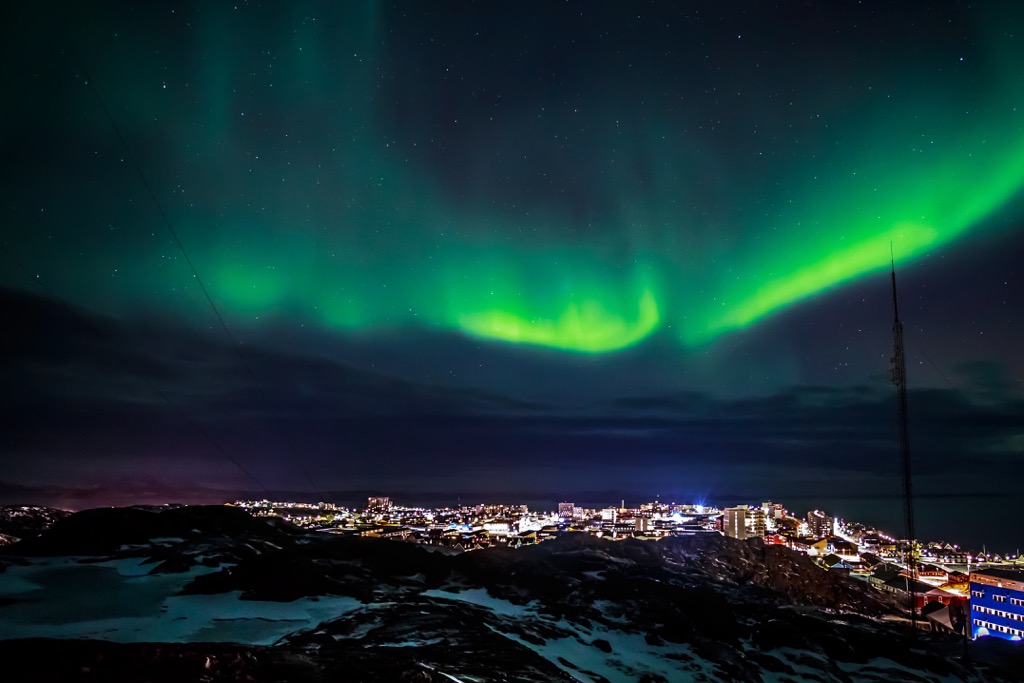
Located in eastern Greenland, on the island of Ammassalik, about 100 km (60 mi) south of the Arctic Circle, Tasiilaq is one of the most isolated settlements on Earth. With a population of about 2,000 people, Tasiilaq is located among breathtaking fjords and massive mountains.
Some of the popular activities are ski touring and dog-sled tours in the winter. Hiking, climbing, helicopter tours, sea kayaking, whale watching, and fishing are popular summer activities. The Flower Valley is located behind the town and remains a popular location for short and long hikes.

Located adjacent to Northeast Greenland National Park, it takes effort to visit. The area was historically occupied by Inuit and the rich hunting grounds allowed the residents to prosper and the economy is still driven by hunting and fishing; however, the tourism industry is starting to grow.
Being adjacent to Northeast Greenland National Park, Ittoqqortoormiit is the starting point for most expeditions into the park. Chartered transportation and tour guides for the park can be hired from Ittoqqortoormiit.
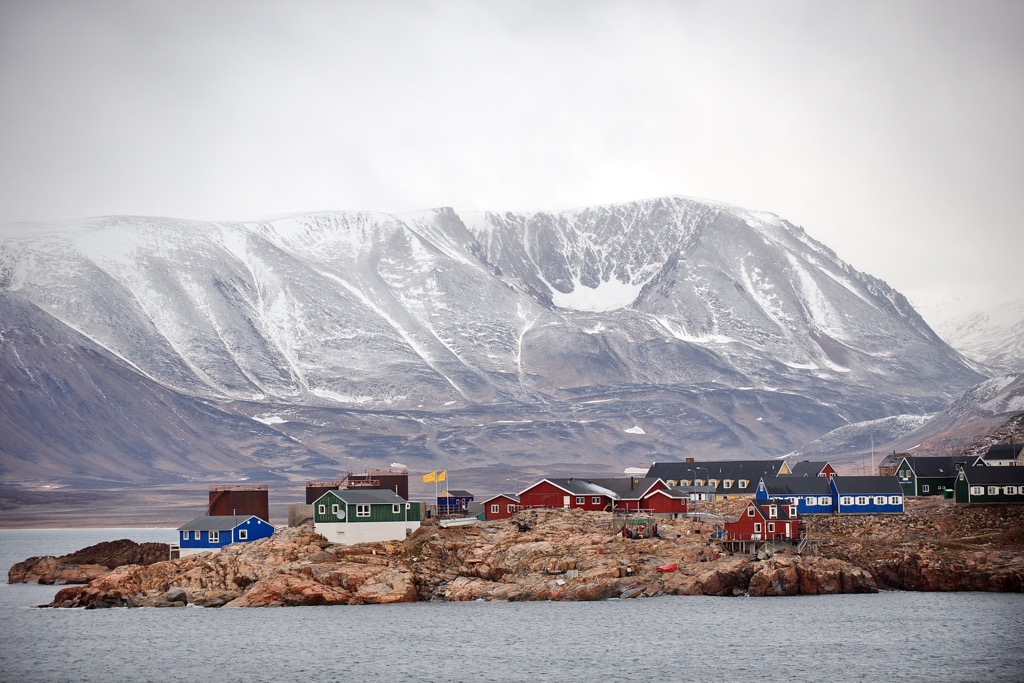
Ittoqqortoormiit is one of the most remote towns in Greenland and it is also one of the closest towns to Iceland. The town’s hotel is considered one of the most remote hotels in the world. There are guest rooms available and a kitchen that provides food for visitors.
While staying in Ittoqqortoormiit, visiting with locals is a fantastic way to discover more about the local culture, as is visiting the museum. Hiking along the coastal mountains or kayaking through the fjords are other popular activities to do while in Ittoqqortoormiit.
Explore Greenland with the PeakVisor 3D Map and identify its summits.








